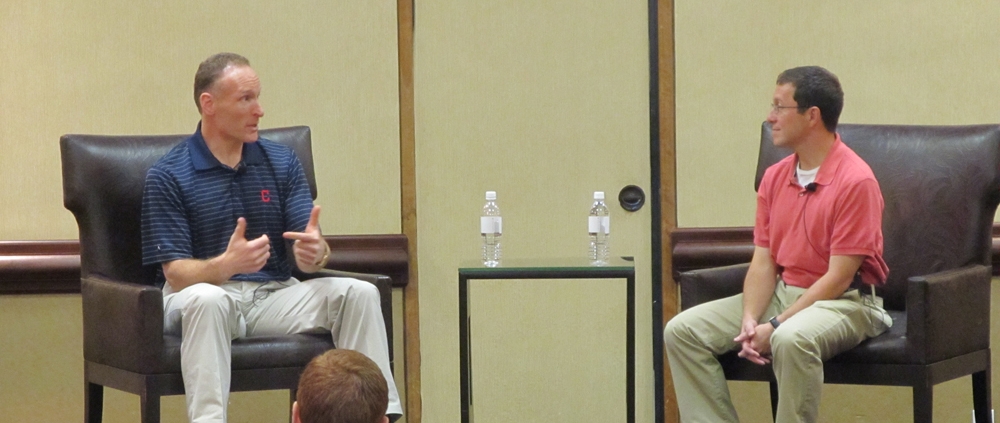2012 SABR Analytics: Q&A with Cleveland Indians president Mark Shapiro
Here are some highlights from our Q&A with Cleveland Indians President Mark Shapiro and moderator Ken Rosenthal of MLB Network/FoxSports.com on Saturday, March 17, 2012, at the SABR Analytics Conference:
- Audio: Listen to the Mark Shapiro Q&A in its entirety here (MP3)
- Video: Watch highlights of the Mark Shapiro Q&A here (YouTube)
 On what baseball operations were like in 1992 (Shapiro’s first season with the Indians)
On what baseball operations were like in 1992 (Shapiro’s first season with the Indians)
- “Game reports were called in by a fax and then transcribed, modems were in their first or second year. Stat books were opened up in our laps as you went around the room. Filing cabinets behind (then-Indians general manager) John Hart’s desk that had scouting reports that were printed off. A lot of time was spent compiling the information to make a decision. … Someone like me, in a cubicle with two or three others, would be charged with gathering information together — we would go to media guides and start pulling biographical information. … I can remember when John Hart’s computer in his office would never be turned on. He said, ‘I’ll turn it on when I can touch the screen.’ And he was joking! Now, I’m sure he’s an iPad user. … We spend 80 percent of our time assembling the information and 20 percent of our time analyzing it. … Now we have really smart people analyzing it and we can spend much more time … applying it to make a decision.”
On the amount of information available today
- “Now it’s nonstop. You wake up every day (thinking) ‘What am I missing?’ You read trade rumors, you read analytics, you read an article in (Baseball) Prospectus and think, ‘How are we doing?’ I wake up and have anxiety because there’s constantly being new frontiers being pushed. And there’s an openness to who can make us better. When young people come to me and say, ‘How do I get in (to baseball)? How do I start?’ … we look for people who, the day they walk in the door, can make us better. We look for people who have demonstrated, through video or scouting or analytics, that they’re going to continue to elevate our thinking and make us better.”
On making objective decisions about players
- “The bottom line is, our assets are still human. They’re not stocks, they’re not real estate. … You’re never going to be able to predict them. So there’s still an art to making a final decision. There’s no computer, no program, that’s ever going to be able to spit out an answer. What the information and data and technology does, what brilliant analysts do, is give us better input to allow us to make good decisions. … How you weight that input, and how you factor it into your own operations and circumstances … and how consistently you execute on that strategy, rather than get impacted by emotion and momentum is … going to vary from team to team.”
On the reliability of current defensive metrics
- “We look at conventional statistics that are available to everybody, and we’ve got our own propietery statistics. Where we feel we’re at as far as objective measurement of defense today is somewhat around the equivalent of using batting average for offense. It has some value, certainly very limited value … but we factor it in. It’s an area where we feel like subjective scouting information is still most important and we combine it all and make evaluations based on that. We’re obviously, as I’m sure you know, on the edge of a new frontier with defensive measurements, so the (challenge) is going to be how quickly we can utilize that data and how quickly we can apply it. That’s the race — someone will get it done faster and everyone will follow.”
For more coverage of the SABR Analytics Conference, visit SABR.org/analytics. Follow along live on Twitter by searching for the hashtag #SABRanalytics or reading live tweets from our account (@SABR) and from other conference attendees.
Originally published: March 17, 2012. Last Updated: July 27, 2020.


